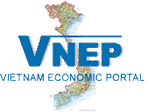
Targeting poverty reduction towards sustainable development
06/08/2010 - 123 Lượt xem
Vietnam’s poverty line fell from 30 percent in 1992 to 8.3 percent in 2004 and below 7 percent in 2005. Drastic changes in infrastructure development have been seen in poor communes and areas with special difficulties and local people’s living conditions have been improved remarkably.
After 20 years of implementing the Doi Moi (Renewal) process, the Vietnamese economy has recorded a relatively rapid growth and tremendous achievements.
Thanks to the Party and State’ correct policies, valuable assistance from the international community and people’s great efforts, Vietnam is taking the lead in the world in terms of poverty reduction and is one of the countries which have reduced poverty successfully in the past 10 years.
Vietnam’s poverty line fell from 30 percent in 1992 to 8.3 percent in 2004 and below 7 percent in 2005.
Drastic changes in infrastructure development have been seen in poor communes and areas with special difficulties and local people’s living conditions have been improved remarkably.
While a segment of national population is becoming rich, there remain many poor households in remote and mountainous areas, posing great challenges for the sustainable and rapid development of the country.
There are favorable opportunities for the country to reach the set target of poverty reduction. That is a relatively high and stable economic growth, which has been maintained for many years and will continue to be so in the next few years.
In the 1986-2005 period, the national economy and GDP showed a stable year-on-year increase. As a result, resources for poverty reduction have been reinforced and utilised effectively. The socialist-oriented market economy has been constantly developed to make it possible to mobilise all resources to boost production and business, generate more jobs and increase labourers’ incomes.
Meanwhile, the basic health, nutrition, life expectancy and human development indexes have been improved incessantly.
According to the United Nations’ Human Development Report 2005 released on September 8, 2005, Vietnam was considered the fastest growing country in terms of human development among Southeast Asia countries to rank of 108th among 177 countries.
Besides advantages and opportunities, Vietnam is still confronted with certain difficulties in poverty reduction and hunger elimination. Although people’s living standards have been improved, their average income and spending remain low. The gap between the rich and the poor is still widening while inequality is likely to increase. The budget for poverty reduction and hunger elimination is still limited as Gross Domestic Product (GDP) per capita could barely reach US$640 in 2005.
To reduce poverty and eradicate hunger effectively, it is necessary to continue improving people’s living conditions in poor communes and households as well as narrowing the income gap between people.
It is also necessary to promote activities in support of poor people to develop production, increase their income, and offer opportunities for them to access high-quality and equal social services in terms of health, education, safe water and housing
Source: VOV.org.vn












